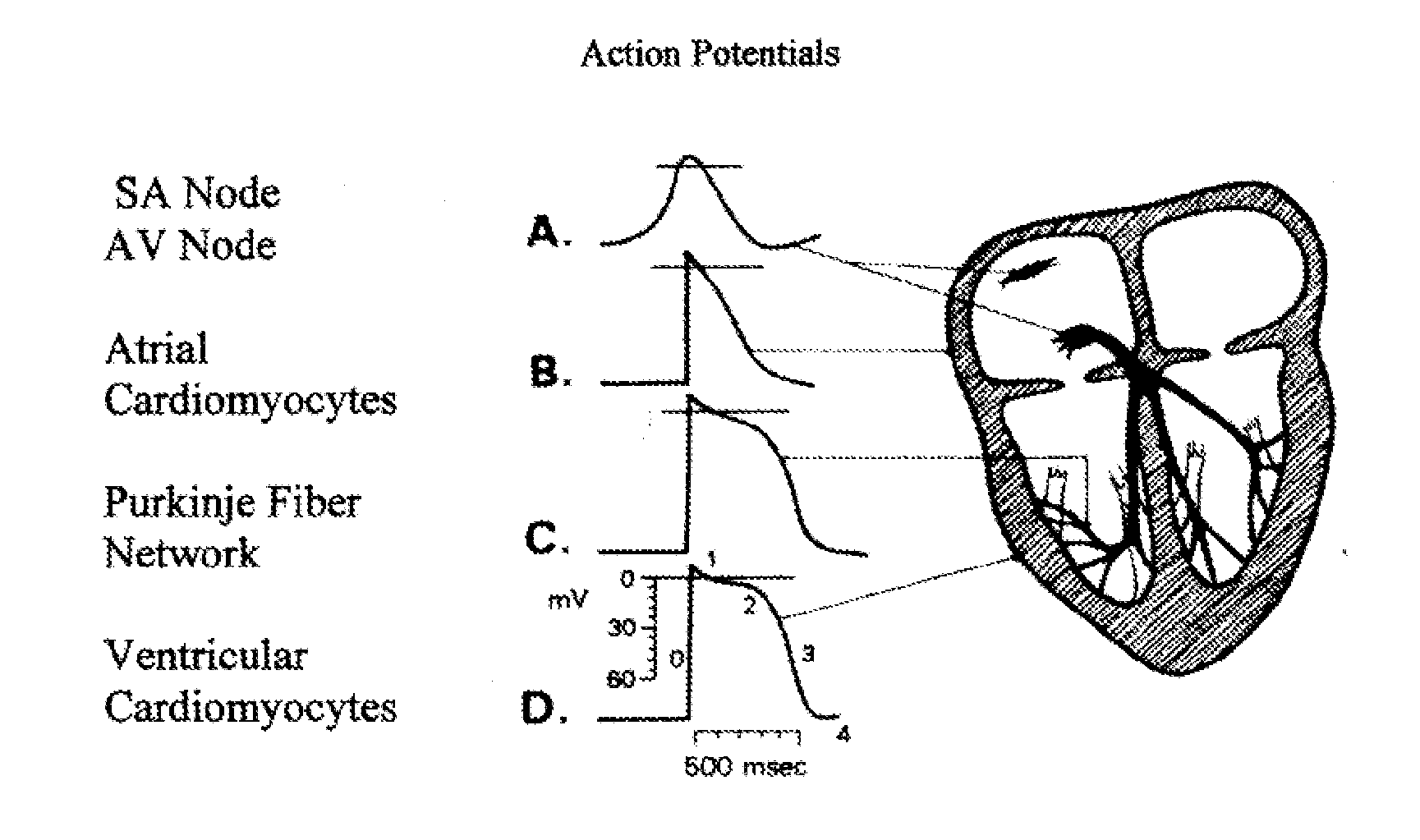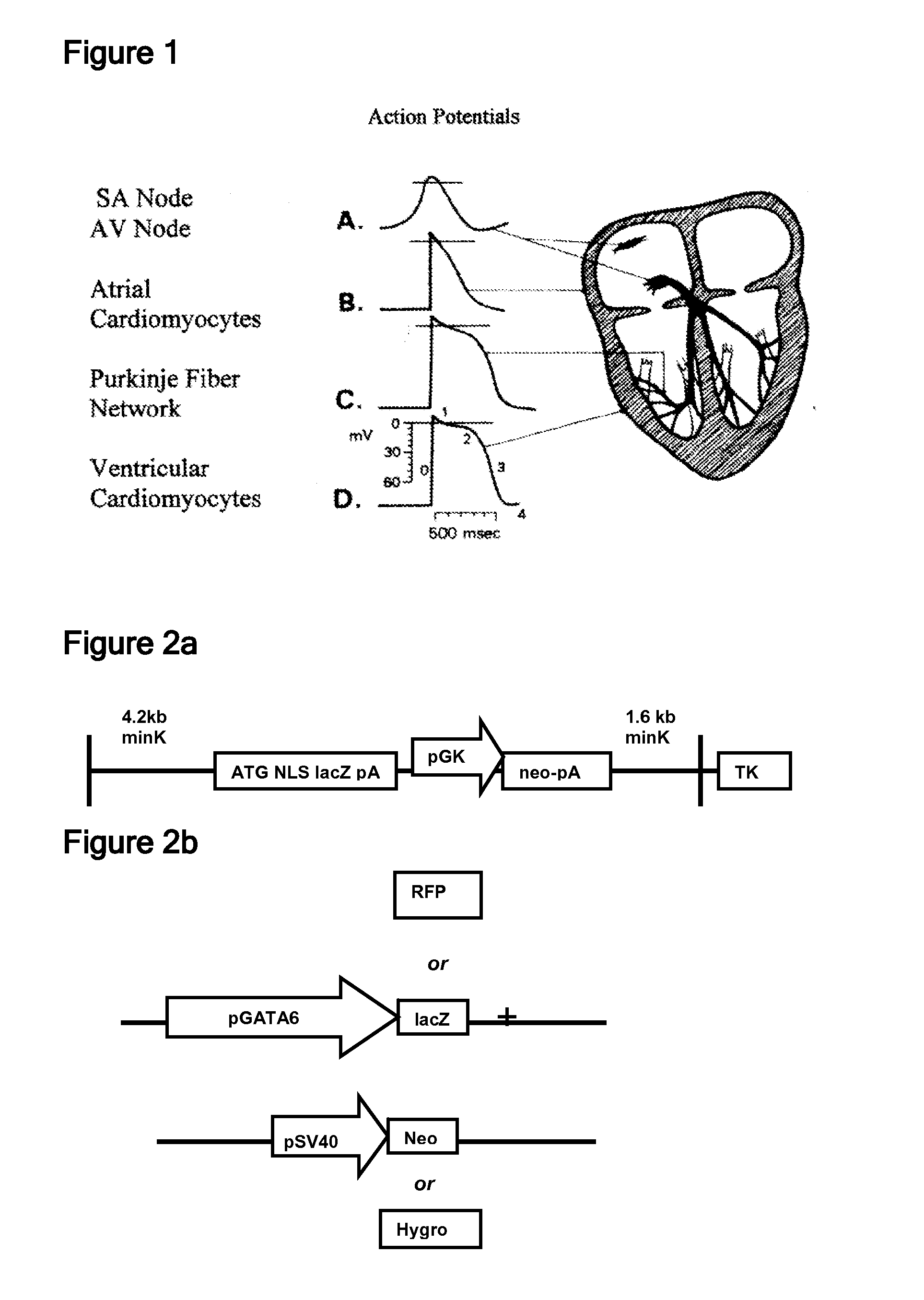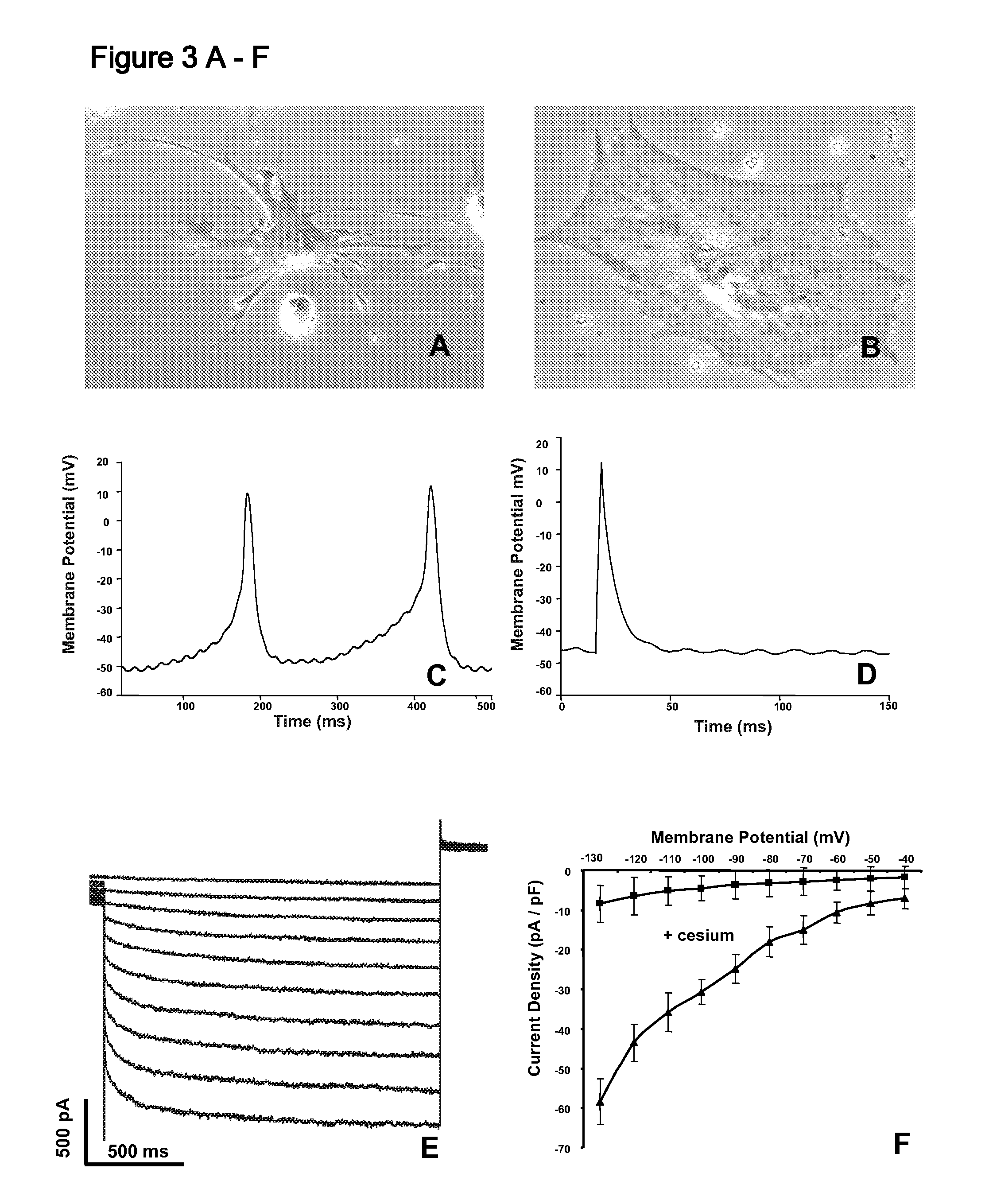Cardiac Conduction System Cells and Uses Thereof
a technology of conduction system cells and cells, applied in the field of cardiology, can solve the problems of no way to know which cells might be specialized pacemakers, source of significant morbidity and mortality, and arrhythmias or complete heart block
- Summary
- Abstract
- Description
- Claims
- Application Information
AI Technical Summary
Benefits of technology
Problems solved by technology
Method used
Image
Examples
example 1
System Development and Characterization
[0095] The expression of lacZ in the minK-lacZ knock-in mice is restricted to discrete regions of the right atrium, extending down through the AV node and interventricular bundles (Kupershmidt S et al. Circ Res 84 (1999) 146; Kondo R P et al. J Cardiovasc Electrophysiol 14 (2003) 383). The cGATA6 enhancer also marks the AV node and discrete regions in the right atrium including the SA node (Davis D L et al. Mech Dev 108 (2001) 105; Edwards A V et al. Novartis Found Symp 250 (2003) 177-89; discussion 189-93, 276-9). Based on an appreciation that expression patterns of minK-lacZ and the cGATA6 enhancer are similar in vivo, the present inventors undertook an examination of expression of both markers simultaneously to determine if they identify the same cells. In order to get an idea of the expression pattern of these markers, EBs generated from ES cells containing the minK-lacZ targeting vector were fixed stained them for β-galactosidase expressi...
example 2
Isolation of GATA6 Populations
[0118] In another embodiment of the invention, pure populations of cGATA6-positive cells were generated by creating an ES cell population containing a vector in which expression of the neomycin resistance gene (neo) as a selectable marker was controlled by cGATA6 regulatory elements. In order to create the selection vector, pcDNA3.1(+)-neo was digested with Bcl1 and re-ligated. This resulted in the re-positioning of the neomycin resistance gene (neo) immediately downstream of the multiple cloning site (MCS). The proximal 1.5 kb (−1.5 / 0.0) region of the chicken GATA6 promoter / enhancer (cGATA6) was inserted between the Sal1 and BamHI sites in the MCS of the modified pcDNA3.1(+)-neo vector (with the Bcl1 fragment removed). In this newly formed vector, neo expression is controlled by the cGATA6 promoter. In order to enrich the population of cells containing the cGATA6-neo vector, linearized cGATA6-neo was co-transfected with linear pcDNA3.1(+)-hygro using ...
example 3
Modulated Differentiation of GATA6 Selected Cells
[0129] Adult nodal cardiac myocytes are able to maintain a primary myocardial (primitive heart tube) phenotype throughout development while surrounding myocytes differentiate into more differentiated, chamber myocardium (Christoffels V M et al. Dev Biol 223 (2000) 266-278; Hoogaars et al. 2004 supra; Moorman and Christoffels, 2003 supra). Paracrine factors and physical stimuli present in the heart during development contribute to the differentiation of the atrial and ventricular chamber myocardium (Brutsaert D L. Physiol Rev 83 (2003) 59-115; Brutsaert D L et al. Cardiovasc Res 38 (1998) 281-290; Chien K R et al. Faseb J 5 (1991) 3037-3046; MacKenna D, Summerour S R, Villarreal F J. Cardiovasc Res. 46 (2000) 257-63). In order to assess if cGATA6 cells are responsive to known cardiac differentiation and growth factors, cGATA6 cells were cultured in the presence of specialized media originally developed by William Claycomb for maintain...
PUM
| Property | Measurement | Unit |
|---|---|---|
| current-voltage relationship | aaaaa | aaaaa |
| current-voltage relationship | aaaaa | aaaaa |
| current-voltage relationship | aaaaa | aaaaa |
Abstract
Description
Claims
Application Information
 Login to View More
Login to View More - R&D
- Intellectual Property
- Life Sciences
- Materials
- Tech Scout
- Unparalleled Data Quality
- Higher Quality Content
- 60% Fewer Hallucinations
Browse by: Latest US Patents, China's latest patents, Technical Efficacy Thesaurus, Application Domain, Technology Topic, Popular Technical Reports.
© 2025 PatSnap. All rights reserved.Legal|Privacy policy|Modern Slavery Act Transparency Statement|Sitemap|About US| Contact US: help@patsnap.com



